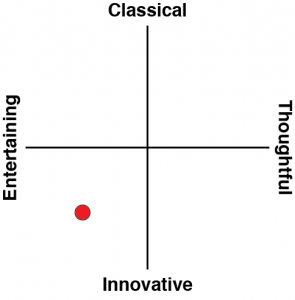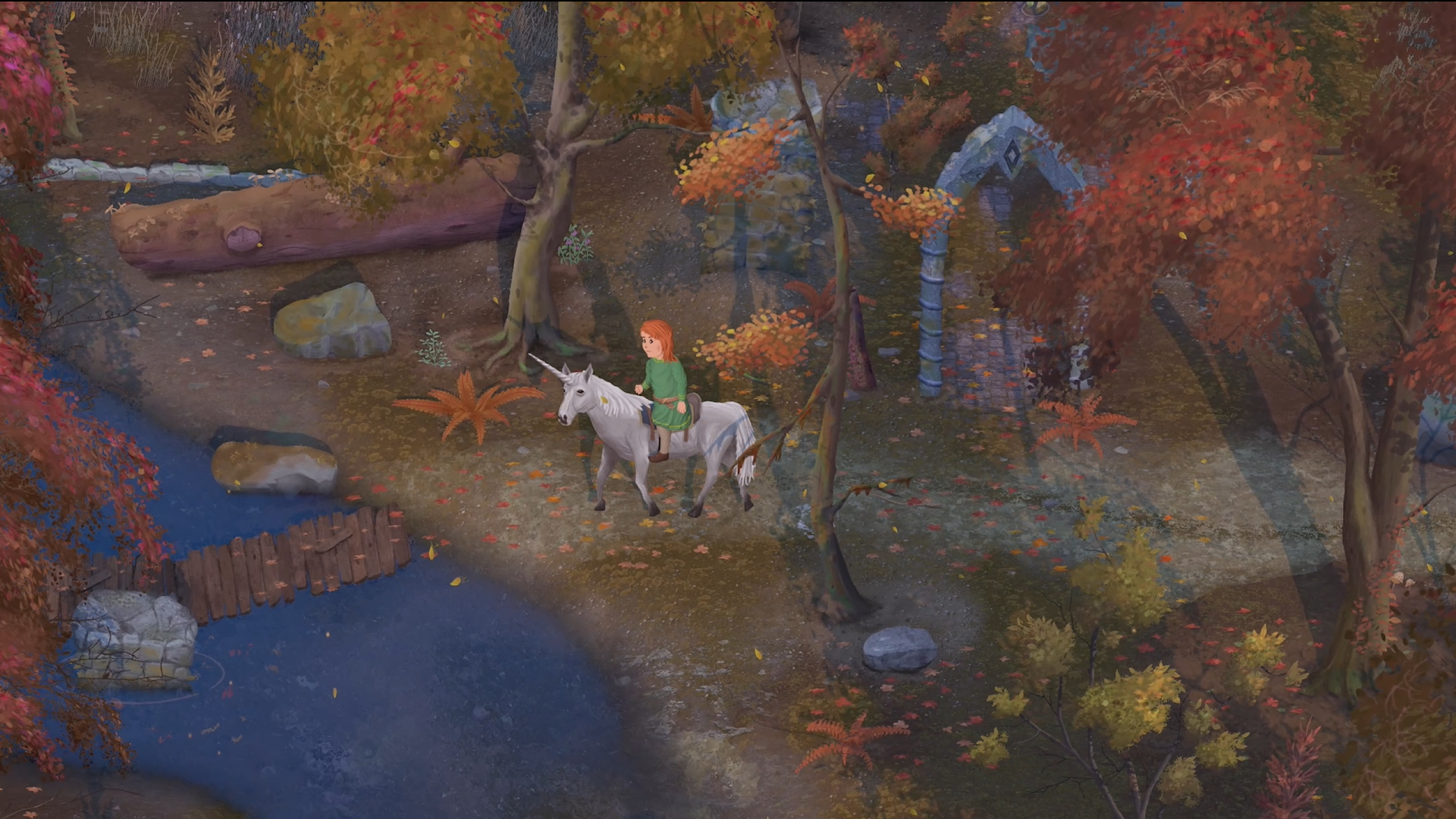Is it strange that of the four titles in the Castlevania Dominus Collection, the one that was most interesting to me was the bonus? That’s not to say that anything else in the collection isn’t very worthwhile, but it’s a full-scale, total end-to-end remake of Haunted Castle, the classic (and classically hated) arcade title. Now with Haunted Castle Revisited, players have a slight chance of actually completing it, and it’s anything but a “bonus” – it must have surely been a major creative and technical endeavour for the developers.
We’ll get back to that. The bulk of the Dominus Collection is the ports of the three Nintendo DS Castlevania titles: Dawn of Sorrow, Portrait of Ruin, and Order of Ecclesia. These three titles are the last three that identifiably belong to the “Symphony of the Night” formula that was pioneered all the way back on the PlayStation, and for a time really dominated the Castlevania experience. While console players were left struggling with one ill-fated attempt after another to bring Castlevania to three dimensions (does anyone want to Lament of Innocence or Curse of Darkness? And those were the better ones), handheld fans had two sets of excellent 2D platformer/RPGs to work through – first on the GBA (already available as a collection on the Switch), and then also on the DS.
This trilogy was quite experimental with the formula, perhaps in recognising that Castlevania needed to find some way to step forward, but with no one quite being sure what would see it have its next Symphony of the Night moment. Not all of the experiments worked, but overall the collection is vibrant, varied, and consistently very good to play through.
Dawn of Sorrow is a direct sequel to Aria of Sorrow, which is a bit of a bother given that Aria’s in a different collection, but putting aside some touchscreen gimmicks, it was a relatively straightforward Castlevania experience. Portrait of Ruin has you playing as two characters, with the ability to combine their skills and strengths, and you’ll need to use that to its full to solve puzzles and progress through the game. I’m not always a fan of this and juggling the two can be like that classic “pat the head while rub the belly” experience, but for the most part it’s a fresh and interesting idea.
And then there’s Order of Ecclesia, which has arguably aged into the greatest 2D Castlevania this side of Symphony of the Night. It’s much (much) more difficult and intense, and has an exceptional glyph system for equipment and magical abilities. It is perhaps padded out by a side-quest system that it didn’t really need, but for Castlevania purists, Order of Ecclesia is worth the price of admission all by itself.
Given that the originals were DS titles that made heavy use of both the dual-screen and touch-screen functions, these were always going to be difficult for the porting house (M2) to grapple with. The GBA titles were much more straightforward, given that the GBA was really just a miniaturised version of the Switch but this… this would take some work to make playable. Incredibly, the developers have exceeded themselves and delivered something that makes several other laboured efforts to port DS games to Switch (notably the Etrian Odyssy series) look lazy by comparison.
So the first thing is that the developers have removed almost all touch-screen functionality in-game, finding ways to map actions to buttons instead. You’ll still need to navigate a virtual keyboard when setting up your name, but otherwise, it’s a very light touch on the touch screen elements.
Secondly – and this is where the port really goes beyond the brief of “a port” – M2 has actually split the screen into three. On one half of the screen is the main platforming action. On the other half are two smaller screens – one that displays the map, and the other that displays other critical information about your character, enemies and so on. This is absolutely brilliant as it makes the experience of playing all three games seamless, compact, and without annoying spaces and a screen layout that reminds you that you’re playing something that was never designed for a single-screen console. This looks like it was always designed exactly the way it plays.
Now I want M2 to go through the DS’ back catalogue and port everything they can get their hands onto. They’ve proven that it can actually work.
Also, they totally remade Haunted Castle. As I mentioned in the intro, this is actually the highlight of the entire package for me. Not only does the top-to-bottom remake completely redraw all the art so that it looks like a totally new Castlevania game, but the developers have also redesigned almost every aspect of every level so that it behaves like that arcade original, but is far more accessible. So for example, in the first level of Haunted Castle there is a scene where you’ll be stuck in a small area and bricks from a haunted building will fly at you across the screen horizontally, damaging you if they hit you. It was almost impossible to avoid some of them carving out a big chunk of your health. The Haunted Castle remake has the same scene, but now the bricks attack you from angles where you can avoid them by playing well.
To be clear: Haunted Castle Revisited is still very challenging. But it’s challenging in a “yes I will play one more time because I am going to win this thing,” rather than “it’s an arcade game designed to swallow all my coins without letting me ever actually win.” It is a genuinely excellent game that almost every Castlevania fan should appreciate.
M2 has also loaded the collection up with all kinds of art and sound player options. There are quick save features (which are enormously useful in games that originally only had save points), and plenty of other quality-of-life features that you expect from a good retro porting house. About the only thing that could have made this even better was some kind of “museum” feature like the Atari 50 spoiled us for. Video mini-documentaries and timelines and history features would have been the icing on the cake.
Castlevania does seem to be a fading name in video games. Prior to Haunted Castle Revisited the last new Castlevania game was more than a decade ago now, and it was the dismal work that MercurySteam did on the series with Lord of Shadows. Castlevania Dominus Collection may well represent the last hurrah for a once powerful name in video games, but at least it reminds us of just how good this series could be.















